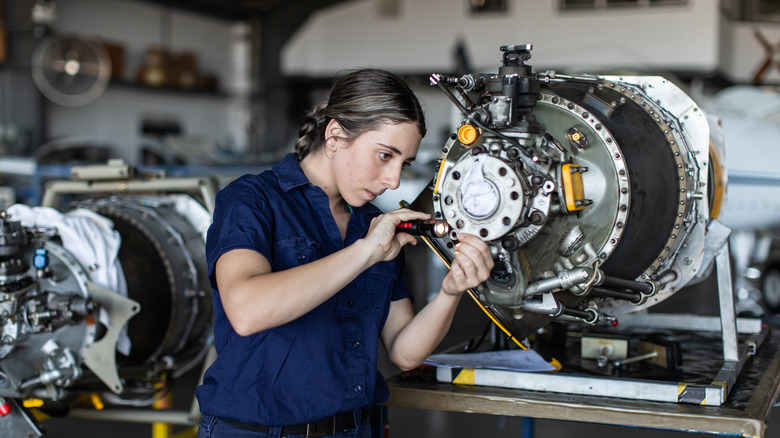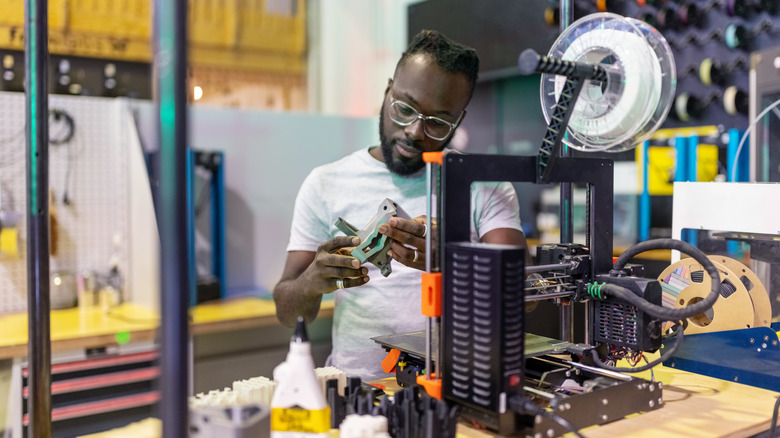What Is The NSF Engines Program? Here's Everything You Need To Know
Scientific progress never takes a break. The scholars, inventors, and engineers of our world are always on the lookout for the next innovative breakthrough, both in the interest of bettering society and just for the fun of discovery. There's always room for improvement; take, for instance, the engines of our cars. Combustion engines have been around since the 1800s, but engineers have never stopped building newer and better versions for the auto industry in the hopes of improving efficiency, affordability, and, more recently, reducing emissions.
Of course, the difficulty with progress is that you still need to pay the bills to keep the lights on while you're revolutionizing the world. If you don't have an immediately viable prototype, a traditional company may find it hard to invest in what could be years-long research. Luckily, there is a powerful body that wants to improve not just engines but all mechanical devices practically and conceptually, and it's willing to open its coffers for anyone who proves themselves dedicated and worthy. That body is the NSF Engines Program, an arm of the United States National Science Foundation, which doles out awards and funding to the innovators of the country.
History of the NSF program
The United States National Science Foundation's Regional Innovation Engines program, or NSF Engines for short, was originally established in 2022 as part of the CHIPS and Science Act signed into law by President Joe Biden. The purpose of this act was to direct a portion of the United States government's budget into investments in promising new avenues of science and engineering. The hope was to empower and advance innovative ideas into tangible, practical solutions to the problems faced by the American public.
Though the NSF program is fairly young, it's been well-received by the scientific community. Following the initial launch in the spring of 2022, ahead of the signing of the CHIPS and Science Act, the endeavor published over 700 concepts for next-generation inventions, narrowing that down to 44 awards for exceptional innovators from companies and universities around the country. After a year and a half of competition, 10 winners were chosen from the awardees at the start of 2024 to receive funding from the program to pursue their concepts. NSF Engines has been going strong since then, with new funding opportunities announced in April of 2024.
Goals of the NSF program
The first and most important goal of the NSF program is to foster innovation all over the United States in the engineering field, especially in states or regions that may not otherwise get a lot of attention in this sphere. If you've got an idea for a new device, even just a rough outline of one, the NSF scheme wants to hear about it no matter who you are or where you're from.
By building up this innovation-centric drive, the NSF program hopes to create an entire network of engineers, researchers, and thinkers across all kinds of disciplines and businesses. Whether you work for an automotive company, are a student at a technical university, or are part of a casual coalition of dreamers operating out of your town's civic center, all are welcome to contribute.
It is the hope of NSF Engines that this combination of cutting-edge and inclusivity will lead to practical economic and beneficial societal growth around the country. It's not just about making a better machine; it's about making a better machine for everything and everyone. The idea is that original, accessible technologies will improve the lives of all American citizens of all origins and locales. The emergence of new jobs and technical fields can lead to a greater abundance of sustainable work to support smaller communities that may not have benefitted as overtly from recent tech booms.
Grants and regional funding
Of course, NSF Engines is more than a souped-up science fair. Those who contribute to the program and are recognized by the National Science Foundation are eligible for a research grant of up to $160 million, not just to support the R&D process but to reinvest in local communities, train and build relevant workforces, and create an environment to foster further innovation.
This isn't a one-off, either; those who receive an award can have their research supported for up to 10 years to fully get their idea off the ground. Even if your idea isn't in a state where it can be formally launched and monetized, NSF Engines could provide two years of preemptive funding to get you started.
Anyone and everyone with an idea is encouraged to apply to the NSF program. Large companies, startups, universities, and even state, local, and tribal governments can choose to join or lead the development of an NSF Engine. If you're not part of a large organization, you can still contribute to the inner workings of the program itself by co-funding its projects, applying for relevant jobs, or seeking out potential connections. Visit the NSF Engines Program website for more information and links to relevant forms for expressing interest.



